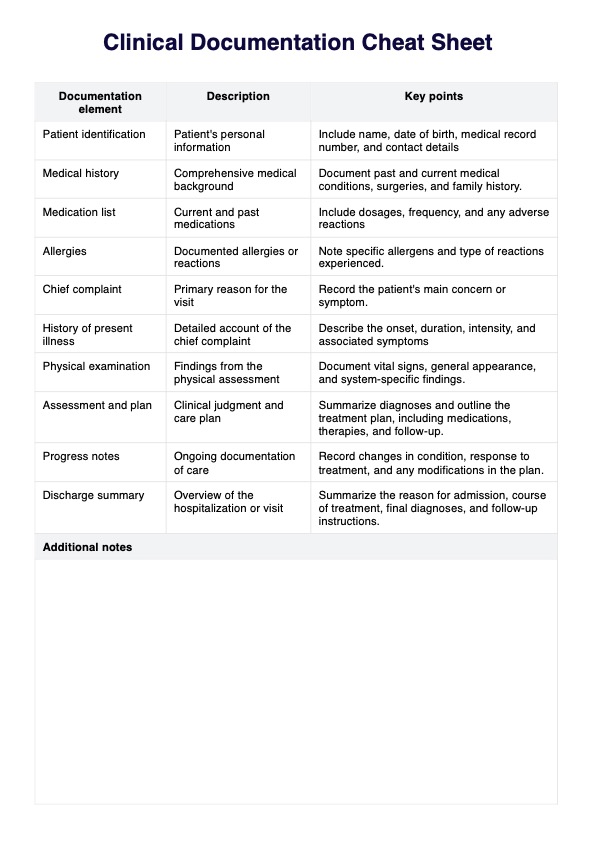Yes, Carepatron's software is versatile and can be adapted to various healthcare specialties, offering customizable features to meet diverse documentation needs.

Clinical Documentation Cheat Sheet
Discover the Clinical Documentation Cheat Sheet for streamlined patient record management. Optimize care with Carepatron's free PDF template.
Use Template
Clinical Documentation Cheat Sheet Template
Commonly asked questions
Absolutely, Carepatron enhances patient education through its online patient portal, facilitating easy access to health information and resources, thus improving patient understanding and engagement with exceptional care.
Carepatron prioritizes data security by adhering to healthcare regulations and employing advanced security measures to protect patient information, ensuring confidentiality and compliance.
EHR and practice management software
Get started for free
*No credit card required
Free
$0/usd
Unlimited clients
Telehealth
1GB of storage
Client portal text
Automated billing and online payments











